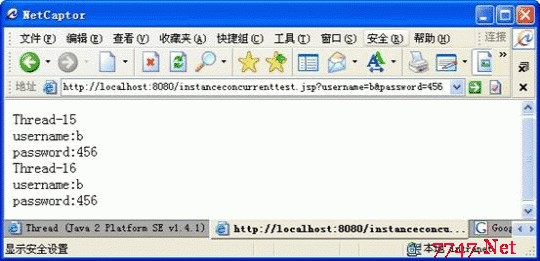js 函数调用模式
1.方法调用模式
2.函数调用模式
3.构造器调用模式
4.Apply 调用模式
在javascript中一共有四种调用模式:方法调用模式、函数调用模式、构造器调用模式和apply调用模式。这些模式在如何初始化关键参数this上存在差异
1.方法调用模式
当一个函数被保存为对象的一个属性时,我们称之它为该对象的一个方法,那么this被绑定到该对象上。
代码如下:
var myObject={
name : "myObject" ,
value : 0 ,
increment : function(num){
this.value += typeof(num) === 'number' ? num : 0;
} ,
toString : function(){
return '[Object:'+this.name+' {value:'+this.value+'}]';
}
}
alert(myObject);//[Object:myObject {value:0}]
2.函数调用模式
当一个函数并非一个对象的函数时,那么它被当作一个函数来调用,this被绑定到全局对象上。这是语言设计的一个错误。倘若语言设计正确,当内部函数调用时,this应该仍然绑定到外部函数的this变量上。如:
代码如下: www.zzzyk.com
var myObject={
name : "myObject" ,
value : 0 ,
increment : function(num){
this.value += typeof(num) === 'number' ? num : 0;
} ,
toString : function(){
return '[Object:'+this.name+' {value:'+this.value+'}]';
},
getInfo:function(){
return (function(){
return this.toString();//内部匿名函数中this指向了全局对象window
})();
}
}
alert(myObject.getInfo());//[object Window]
当幸运的是,有一个很容易的解决方案:定义一个变量并给它赋值为this,那么内部函数通过该变量访问到指向该对象的this,如:
代码如下:
var myObject={
name : "myObject" ,
value : 0 ,
increment : function(num){
this.value += typeof(num) === 'number' ? num : 0;
} ,
toString : function(){
return '[Object:'+this.name+' {value:'+this.value+'}]';
},
getInfo:function(){
var self=this;
return (function(){
return self.toString();//通过变量self指向myObject对象
})();
}
}
alert(myObject.getInfo());//[Object:myObject {value:0}]
3.构造器调用模式
JavaScript是一门基于原型继承的语言。这意味着对象可以直接从其他对象继承属性。该语言是无类别的。
如果一个函数前面带上new来调用,那么将创建一个隐藏连接到该函数的prototype成员的新对象,同时this将会被绑定到构造函数的实例上。
代码如下:
function MyObject(name){
this.name=name || 'MyObject';
this.value=0;
this.increment=function(num){
this.value += typeof(num) === 'number' ? num : 0;
};
this.toString=function(){
return '[Object:'+this.name+' {value:'+this.value+'}]';
}
this.target=this;
}
MyObject.prototype.getInfo=function(){
return this.toString();
}
/*
同时创建一个MyObject.prototype对象,myObject继承了MyObject.prototype的所有的属性,
this绑定到了MyObject的实例上
*/
var myObject=new MyObject();
var otherObject=new MyObject();
//alert(myObject.target===myObject);//ture
//alert(myObject.target.getInfo());//[Object:MyObject {value:0}]
myObject.increment(10);
otherObject.increment(20);
alert(myObject.value);//10
alert(otherObject.value);//20
4.Apply 调用模式
JavaScript是一门函数式的面向对象编程语言,所以函数可以拥有方法。
函数的apply方法,如同该对象拥有此方法,使该对象拥有此方法。此时this指向该对象。
apply接收两个参数,第一个是要绑定的对象(this指向的对象),第二个是参数数组.
代码如下:
function MyObject(name){
this.name=name || 'MyObject';
this.value=0;
this.increment=function(num){
this.value += typeof(num) === 'number' ? num : 0;
};
this.toString=function(){
return '[Object:'+this.name+' {value:'+this.value+'}]';
}
this.target=this;
}
function getInfo(){
return this.toString();
}
var myObj=new MyObject();
alert(getInfo.apply(myObj));//[Object:MyObject {value:0}],this指向myObj
alert(getInfo.apply(window));//[object Window],this指向window
补充:web前端 , JavaScript ,




